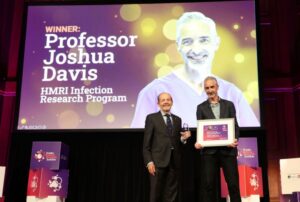
Michael Rodrigues appears at ease as he reflects on his role as Sydney and New South Wales’ 24-hour economy commissioner. “It’s been tough,” he admits, “there’s no doubt about that… but there’s cautious optimism.” His assessment is modest; the city’s approach to nightlife has undergone a significant transformation since his appointment four years ago.
Sydney, renowned for its laid-back attitude, iconic Opera House, and pristine beaches, has struggled with a nightlife reputation that was anything but easygoing. Streets that once bustled with vibrant nightclubs became eerily quiet, governed by stringent regulations on everything from alcohol to mirror balls. Rodrigues is spearheading the ambitious task of revitalizing Sydney’s nightlife, backed by a substantial budget.
The Impact of Lockout Laws
Central to Sydney’s nightlife woes were the draconian “lockout” laws aimed at reducing alcohol-related harm. Enforced across much of central Sydney from 2014 to 2021, these laws prohibited entry into venues after 1:30 am and restricted alcohol sales. The economic repercussions were severe, with estimates suggesting $16 billion in annual losses and the closure of over 150 venues.
“Lockouts were a real crisis. Everyone could see it,” says Matt Levinson from the Committee for Sydney, a policy think tank. “People had this real sense that the city was shut.” Under Rodrigues’ leadership, supported by the government, Sydney has seen a complete overhaul of its nightlife policies, removing “archaic” laws and reducing bureaucratic red tape.
Reforms and Their Reception
Recent reforms have made it easier for councils to extend opening hours, promote outdoor dining, and incentivize live music performances. Levinson acknowledges these changes as positive but cautions that the city was at “rock bottom” before, and it will take time for the impact to be felt.
Key to the nightlife revival is the growth of popular evening locations outside the city’s central business district. The government has encouraged this by designating “special entertainment precinct” status to suburbs as far as Canley Vale and Byron Bay. However, this expansion has faced opposition from residents concerned about noise and antisocial behavior.
Global Context and Challenges
Sydney is among 97% of major global cities with nightlife policies, according to the World Cities Culture Forum. Unlike many cities grappling with tight budgets and mixed political support, New South Wales boasts a $27 million budget, making it the most well-resourced nighttime economy office globally. Dr. Alessio Kolioulis from University College London notes, “What the New South Wales government is doing is setting the bar high globally.”
Despite favorable regulations, Sydney has yet to experience the anticipated nightlife boom. High living costs and inflationary pressures make a night out expensive, and data reveals sluggish growth in nighttime spending, with a decline in the number of pubs and bars last year. A speaker at a state-organized conference remarked, “Policy alone doesn’t create a vibe.”
Changing Social Dynamics
The decline in club attendance is often attributed to younger Australians drinking less. Research suggests Gen Z Australians are nearly 20 times more likely to abstain from alcohol compared to baby boomers. However, Rodrigues is more concerned about broader social changes, describing the next chapter as a “war on the couch,” citing rising social isolation statistics.
“Young Australians are rewriting the rhythm of the city,” says Dr. Anna Edwards from the University of Melbourne. “Traditional nightlife no longer captures how many young people want to connect in their free time. They’re looking for affordable, social, and creative experiences.”
The Rise of Daytime Events
In Sydney, there’s a growing trend of daytime “soft clubbing” experiences and “coffee raves,” appealing to those seeking “conscious connection” without alcohol. Connor Cameron, co-founder of Maple Social Club, observes, “The young population of Sydney just wasn’t used to going out as much. They’ve been trained by Covid to stay at home.”
While “day clubbing” is not new, these Instagram-friendly events contrast with trends in cities like Berlin and London, where many venues ban photos to protect nightclubs as spaces of freedom. In Sydney, however, “Instagrammability” is part of the appeal, with venues designed to be shared on social media.
Sydney’s natural beauty contributes to its daytime allure. Nearly two-thirds of cafes and restaurants in Sydney’s CBD open by 8 am, compared to just 37% in London’s Soho. In Australia’s capital city CBDs, morning spending rivals evening spending, a contrast to many global cities.
Levinson believes Sydney should “play to its strengths,” while Rodrigues emphasizes the importance of a diverse offering, not limited to nightclubs or younger audiences. “We have gathered around fires for 60,000 years. People will always want to come together… We are social beings.”






